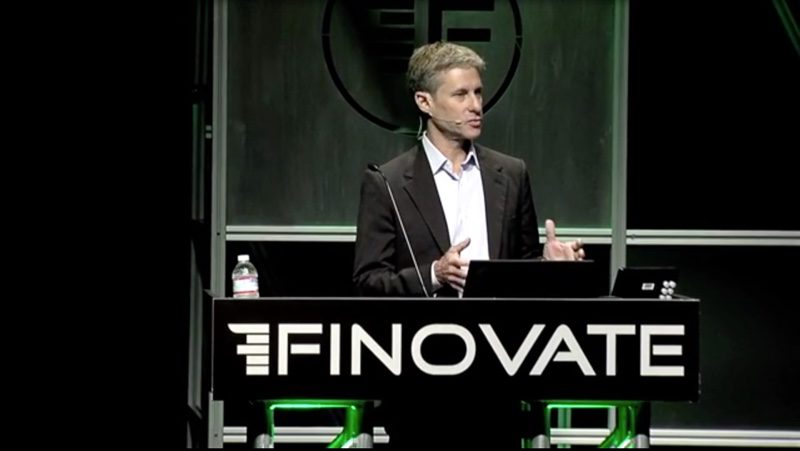Is the new multi-sign feature on the Ripple Consensus Ledger (RCL) the answer to preventing security breaches like the cyber-heist that cost the Bangladesh Bank more than $100 million?
That’s how Ripple sees it. Pointing to the problem of “outdated single-signature methods” of legacy payment networks, Ripple has introduced new multi-sign functionality for its RCL. Combined with the inherent transparency of the consensus ledger, the additional layer of control gives financial institutions another tool to combat fraud and unauthorized transactions. Pointedly, Ripple notes, this tool is not available via SWIFT, which is a major problem for FIs and a potential source of opportunity for companies like Ripple.
CEO Chris Larsen demonstrated the Ripple network at FinovateSpring 2013 in San Francisco.
“The new features found in distributed fintech solutions, such as multi-signing, are not available in traditional systems like Swift,” Ripple asserts. “Blockchain technology delivers a more robust and distributed security architecture for banks.” The multi-sign functionality on RCL will enable account holders to require more than one stakeholder to sign off on transactions. These signatures can be required from other users, other institutions, and/or other devices, making it that much more difficult for someone to make an unauthorized or fraudulent transaction.
And because Ripple’s multi-sign is “enforced by the RCL” rather than the FI itself, there is a greater chance of detecting fraud—particularly internal fraud—than with those traditional methods even if they rely on some measure of multi-signing. Ripple adds that multi-sign functionality won’t end with the RCL; the company also plans to make the technology an added feature of its Interledger Protocol (ILP).
Founded as OpenCoin in 2012, and rebranding as Ripple in 2015, the company’s founder and CEO Chris Larsen introduced the Ripple network at FinovateSpring 2013. Ripple announced that it added seven banks to its list of FIs testing cross-border payments using its technology in June, the same month the company received a BitLicense to trade virtual currencies in New York.

